When I did the RV flight test I had to start a new page in my logbook, and adding up the totals I found that my grand total was 10,999.1 hours – only 0.9 hours to 11,000.
How good would it be to pass 11,000 hours in my own RV6? It would be kind of cool to do it at work, where they could get the publicity, but then again they milked the 10,000 milestone with cakes, photographers, newspaper articles and the like. I managed to save a newspaper cutting for my logbook:
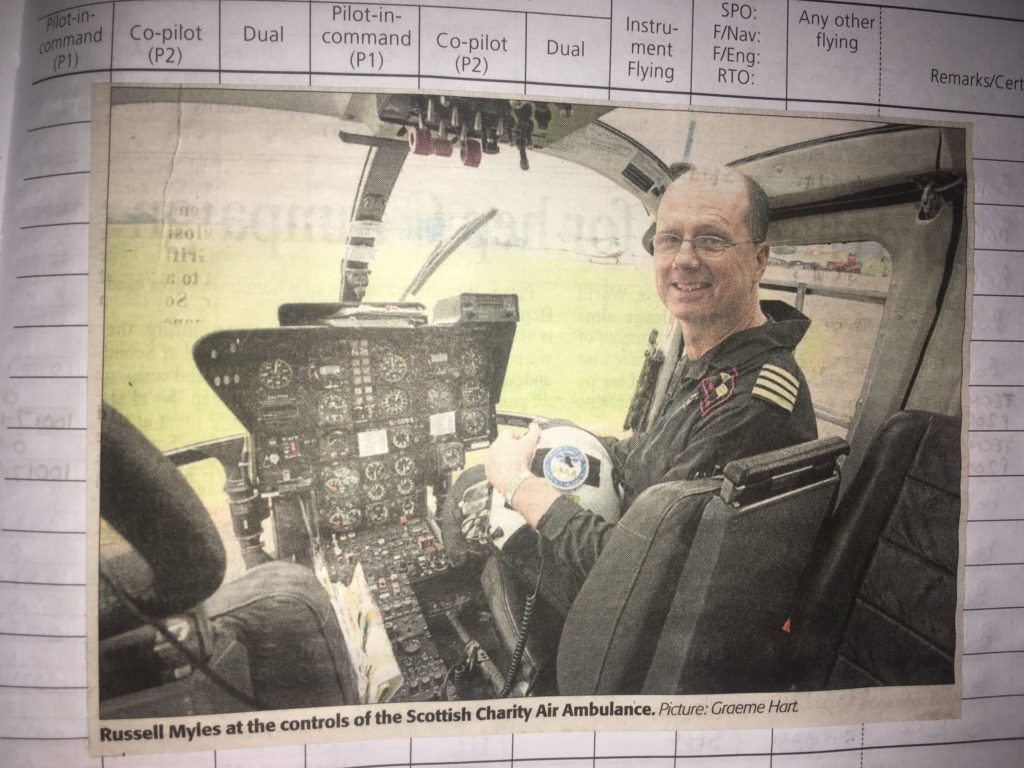
So this time I was hoping to pass the 1000 mark in my own aircraft. Unfortunately I had just sent the permit renewal paperwork for the RV away to the LAA, and nothing had come back yet. With not so settled weather on the way and having to go back to work in a few days, it was a race against time to see if the permit paperwork would return in time.
It was looking increasingly unlikely so it was time to bring out the small guns! The Eindecker just needed a bit of TLC to be ready to launch on patrol…air in the tyres, fuel in the tank, inspection of linkages and flying wires, greasing of hinges and a bit of a wipe to get the dust off. Trust me, at the speed this thing flies at, the wind doesn’t blow any dust off. There’s a boundary layer of low speed air which just doesn’t shift the dirt. I once spotted a fly sitting on the wing at 1000ft over Dunkeld, cheekily enjoying the ride.
I like to think of the Eindecker as a kind of aerial jetski…owning it makes no sense but it’s bloody good fun when you do get it out and go for a blast. Last year was a low utilisation year but this year I plan to do a lot more. It likes low wind days so calm high pressure days are ideal. And we’ve had a lot of those recently.
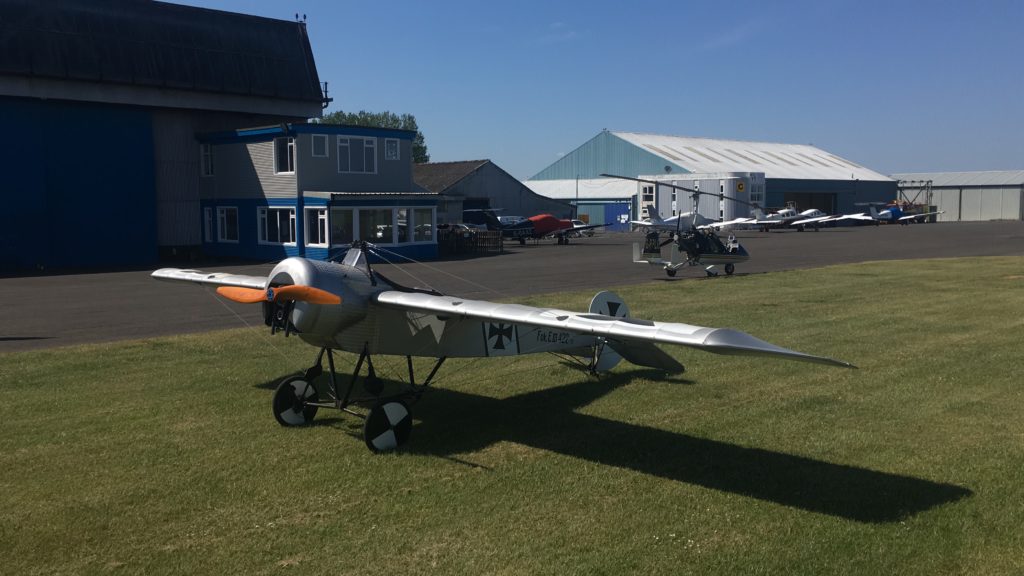
I had applied for permission from the airfield operator for an “out of hours” flight as the tower is currently unmanned. The microlight school at the field was doing engine runs and solo hire, so it wasn’t totally dead.
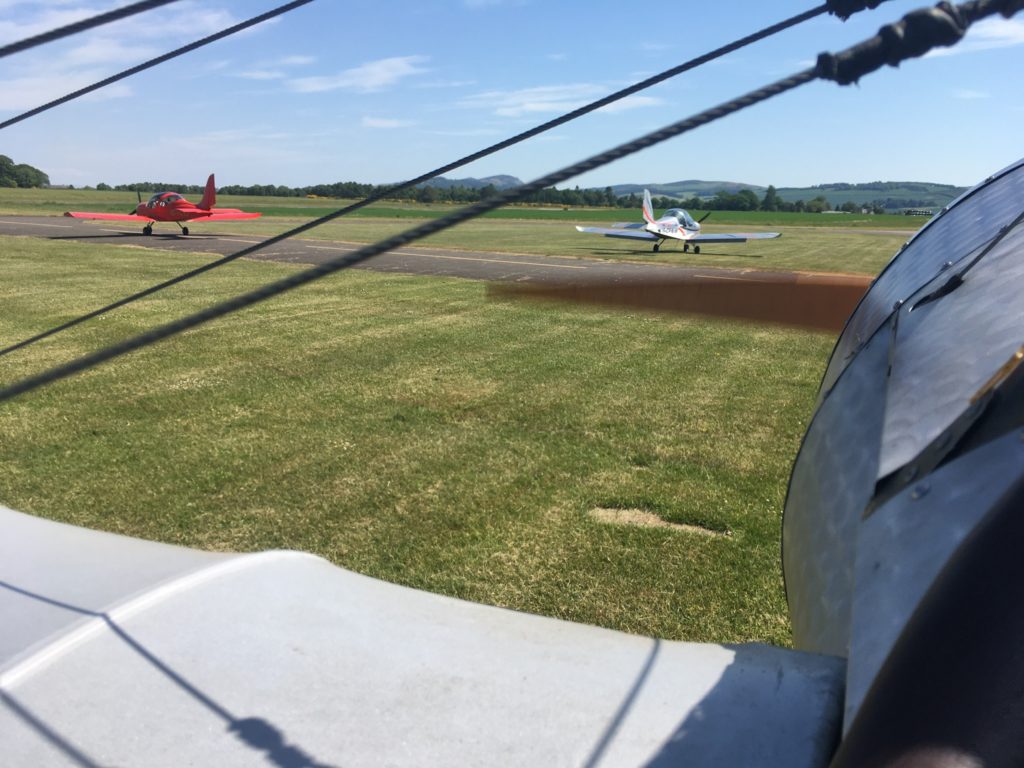
Take off was to the east with a left turn to the north past Balbeggie, hoping not to annoy the neighbours too much with the mighty 40 horse power drawing us sedately through the sky at 40 MPH. This is a by-the-numbers machine…most things are done at 40. Take off, climb, cruise and land. Wouldn’t be surprised if the oil pressure was 40 psi as well. Oh, and the tyre pressures too…
Passing the fruit farms near Blairgowrie:
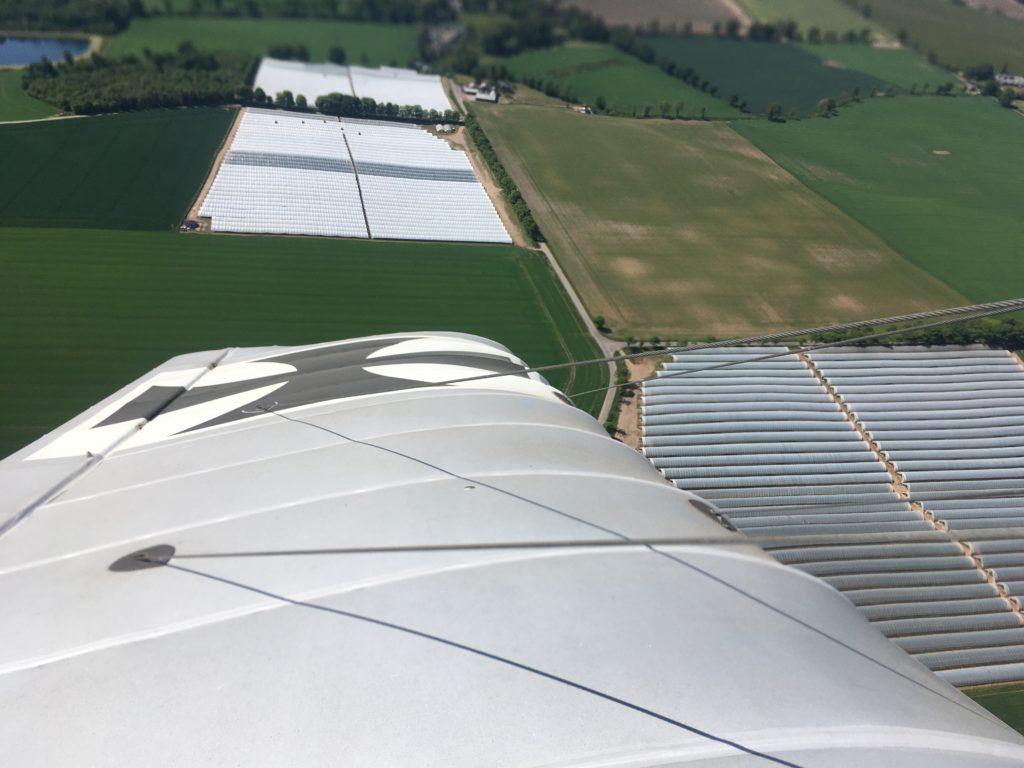
We did a little bit of patrolling over the lines. Power lines that is:
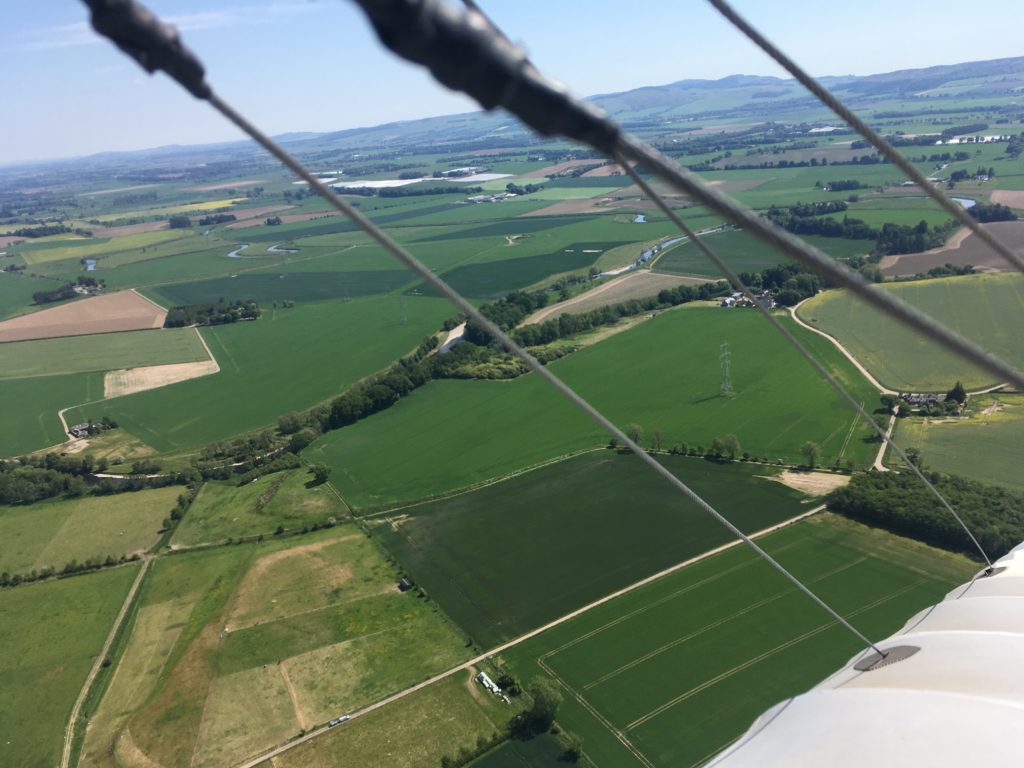
And then southwest towards the River Tay at Murthly. Taking photos with a phone in an open cockpit Great War replica is fraught with danger. I had to make sure the phone was angled so that the airflow was pushing it back into the cockpit in case I did drop it. You’re seeing these photos now so obviously I didn’t lose my phone…but there were a lot of rubbish ones where the autofocus was fooled by the wires. These five are the only usable ones out of about fifteen…
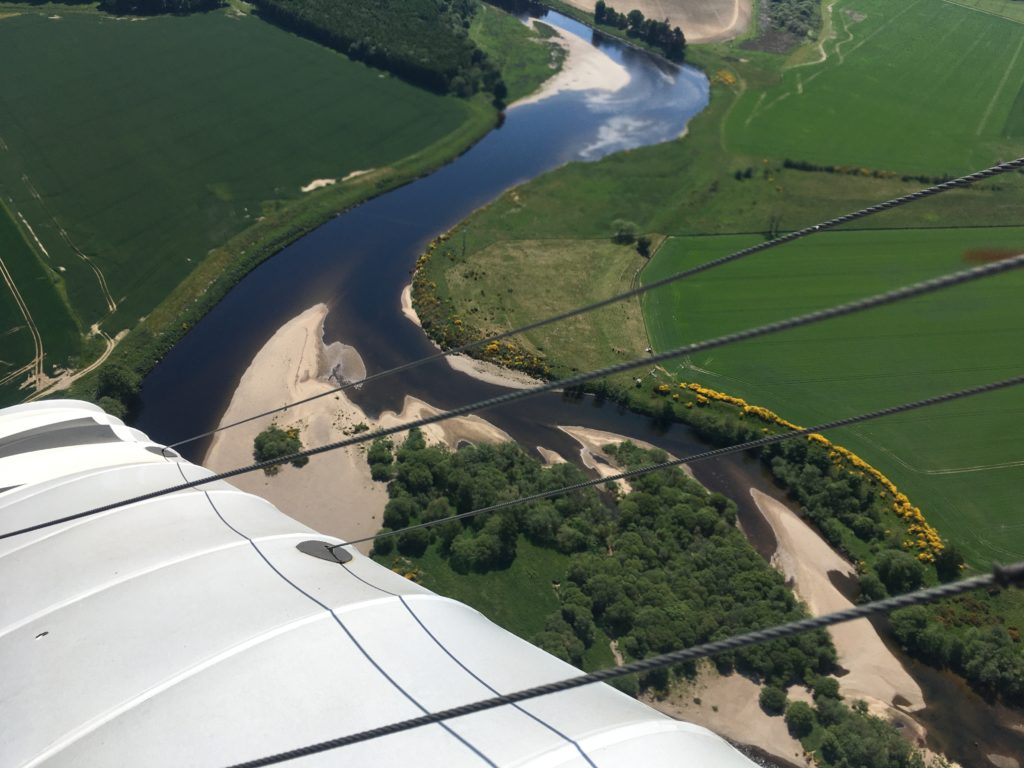
Here we are passing Stanley Mills towards the appropriately germanic sounding Strelitz Wood, which is (allegedly) named after Sophia Charlotte of Mecklenburg-Strelitz, wife of King George 111:
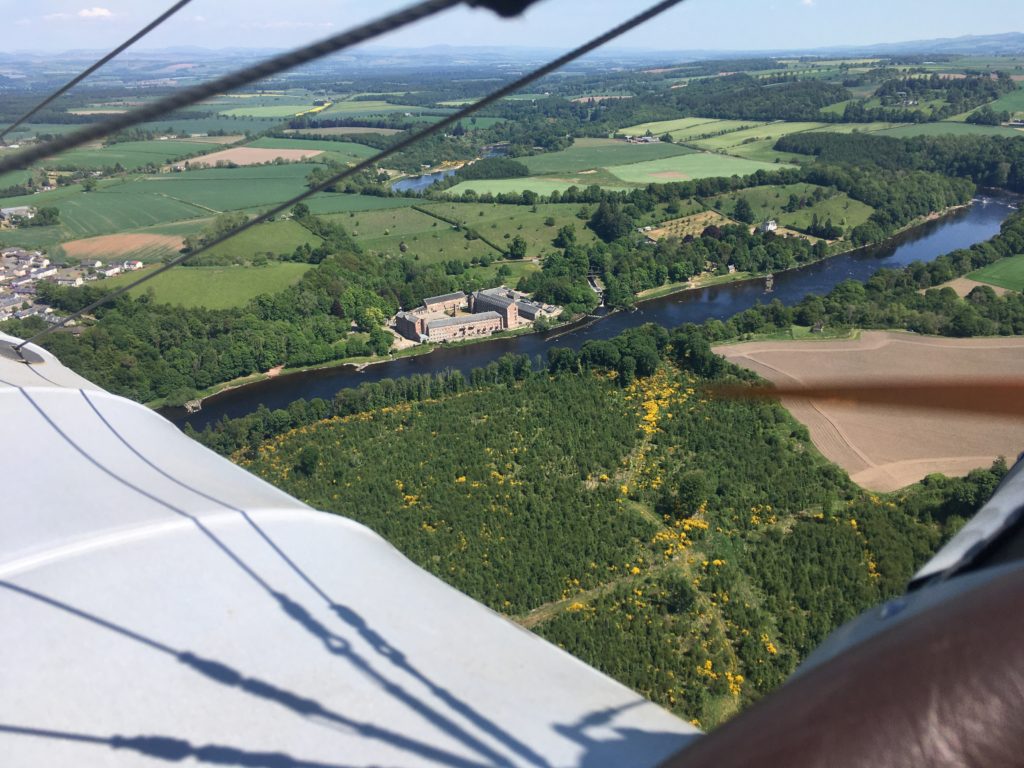
After ensuring the skies over Strelitz were clear of any marauding tommies, we wandered over to Kinrossie to have a look at a burning field of stubble, which was visible for miles. Smelling the smoke in an open cockpit aircraft is an experience, much more pleasant than the smell of fish I got in the cockpit of a rented Cessna 152 as I turned from base leg to final for Reykjavik’s runway 19 many moons ago…
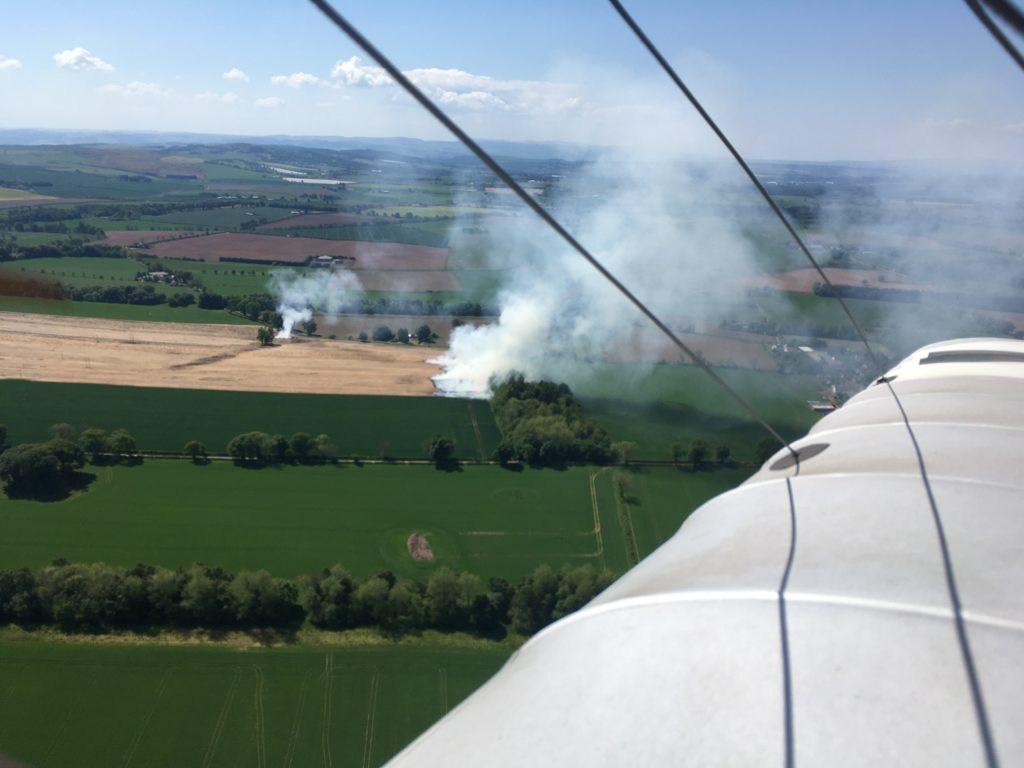
Brenda always laughs when I say things like “we wanderered over…” when I’m in a single seat aircraft. I also say it when solo in the RV. I just smile and claim it must be a “man and machine in perfect harmony” sort of thing!
After checking the results of the (…artillery…) fire at Kinrossie we had flown 50 minutes. I only needed 55 to break the 11,000 but from Kinrossie back to the airfield took another 20 minutes!
It’s only 2.8 nautical miles, but with runway 09 in use I had to sneak my way round to the dead side of the circuit. Hopping from brown field to brown field to take advantage of the thermals to gain some height. Also I had to go around when a Eurostar missed the second turning and had to backtrack.
Go around! With 40 HP. That was interesting…and a fairly tight low level circuit to land. We taxied over to work and shut down:
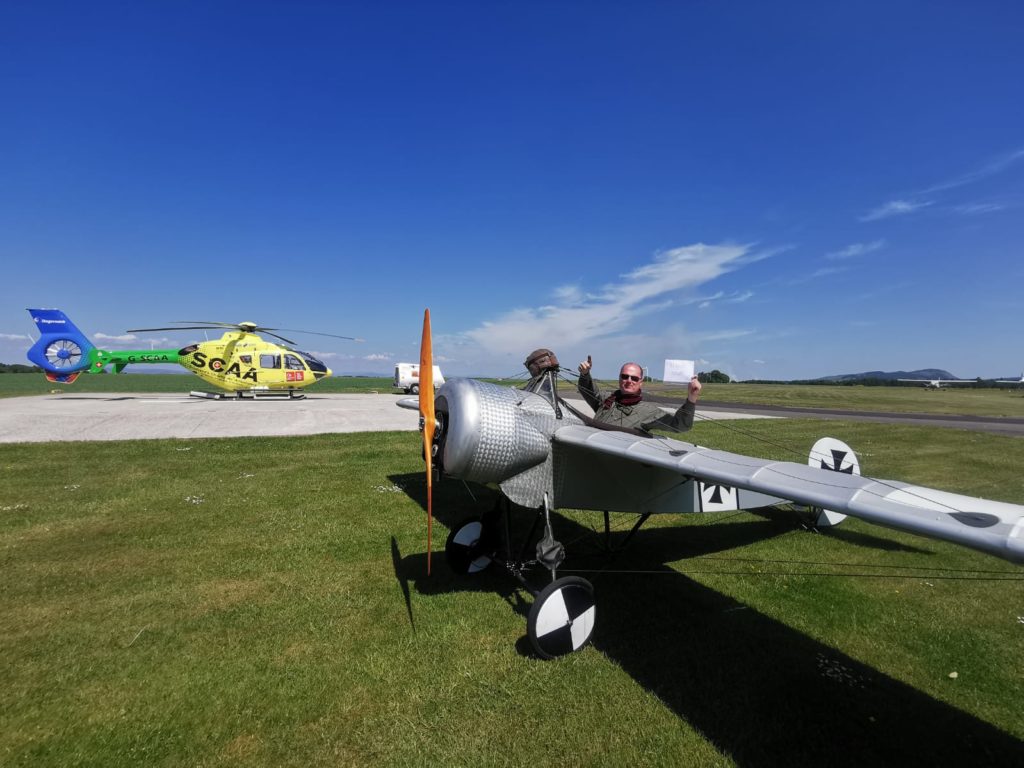
Paramedic Julia (known as “snapper”) was on shift and I needed a photo to mark the occasion. Here’s a sign I made earlier. Just as well I didn’t land out in a field after only 50 minutes:
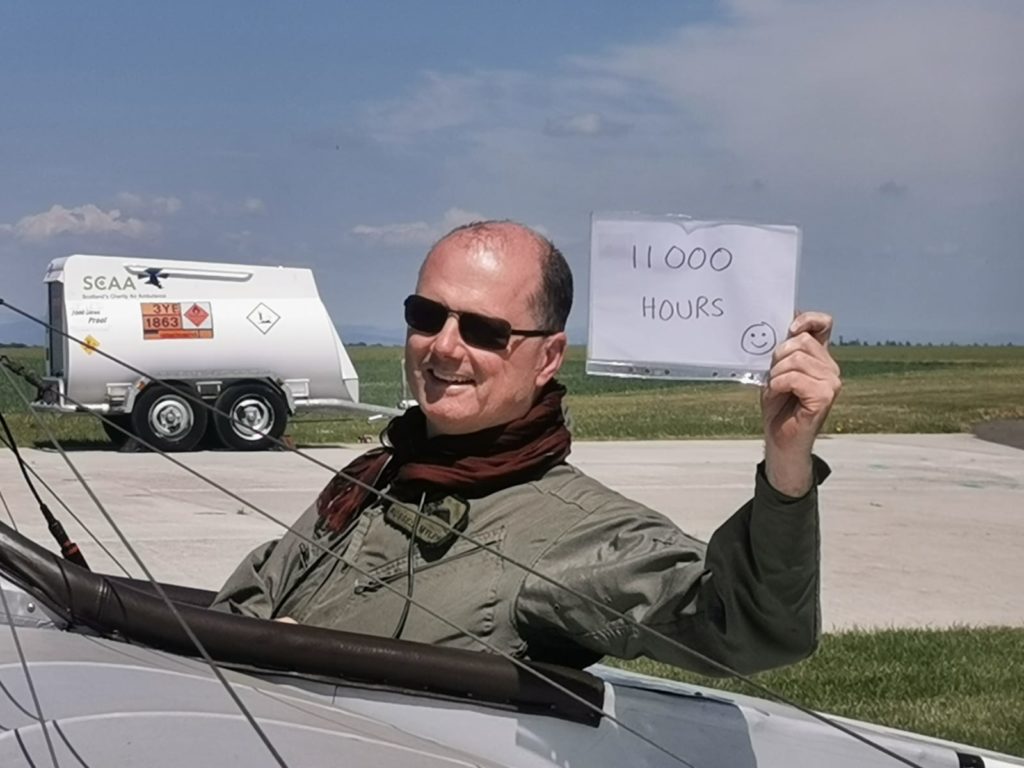
Work machine from Airbus, formerly Eurocopter Deutschland and play machine, replica of a Great War German army fighter. Bit of a German theme going on here…
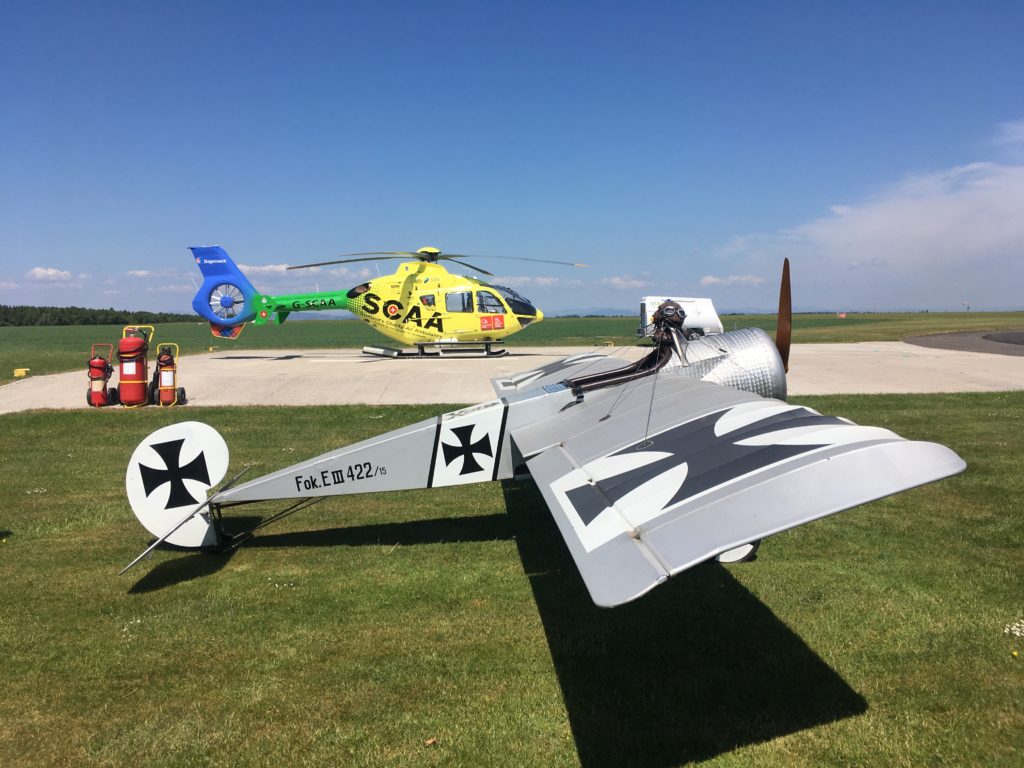
As an extra bonus of the one hour engine health flight I was able to test the performance of the hand held radio when it was hooked up to the aircraft’s internal aerial. Result: MUCH better than the “rubber duck” style aerial. I can actually hear other aircraft transmitting from more than a few miles away. A great improvement.
As I put the aircraft back in the hangar the wind had shifted slightly, and the smoke plume from the Kinrossie stubble fire was more vertical, leading to the pretty cool meteorological phenomenon known as a pyrocumulus – a cumulus cloud where the formation trigger is rising air caused by a fire. It was only a wee one, not like the massive ones that are sometimes seen over wildfires in California, Canada and Australia. They are pretty rare, because the air needs to be a little moist, and moist air isn’t usually associated with the dry conditions which set off wildfires. In this case the gentle easterly wind was bringing in just enough water vapour off the North Sea to give the smoke plume a little cap of cloud. It didn’t last long.
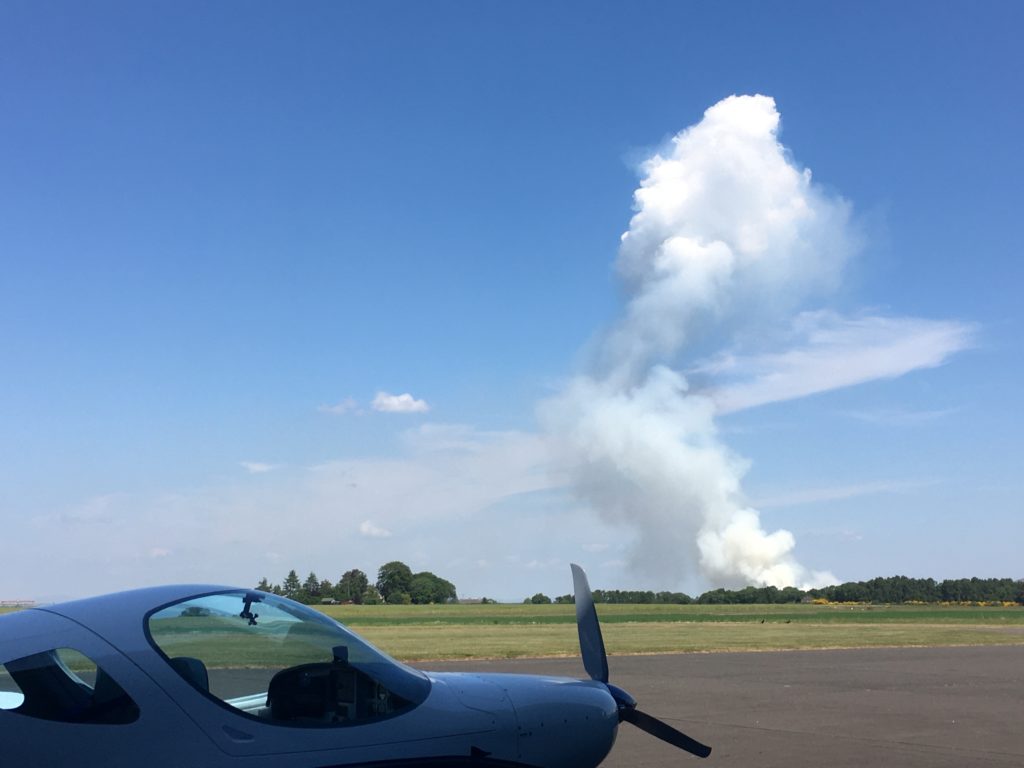
The nice weather conditions have made for some good photography from the work machine. Paramedic JP took these on the way to Campbeltown. A view of Goat Fell on Arran:
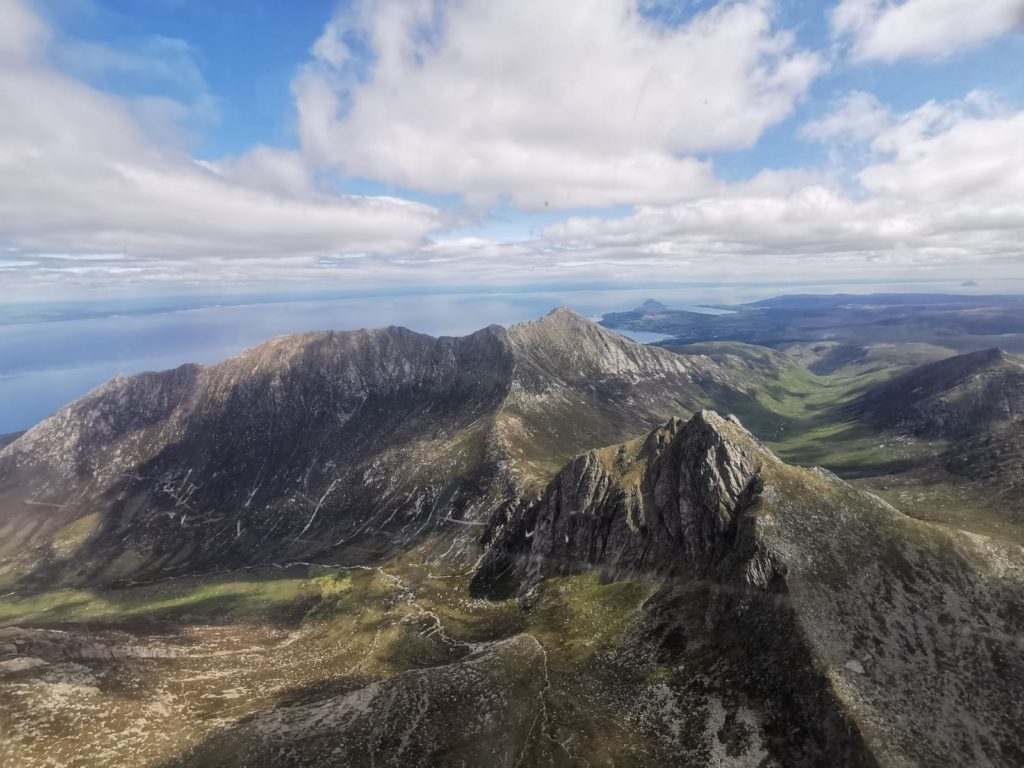
And the town of Dunoon with Holy Loch just to the north (right):
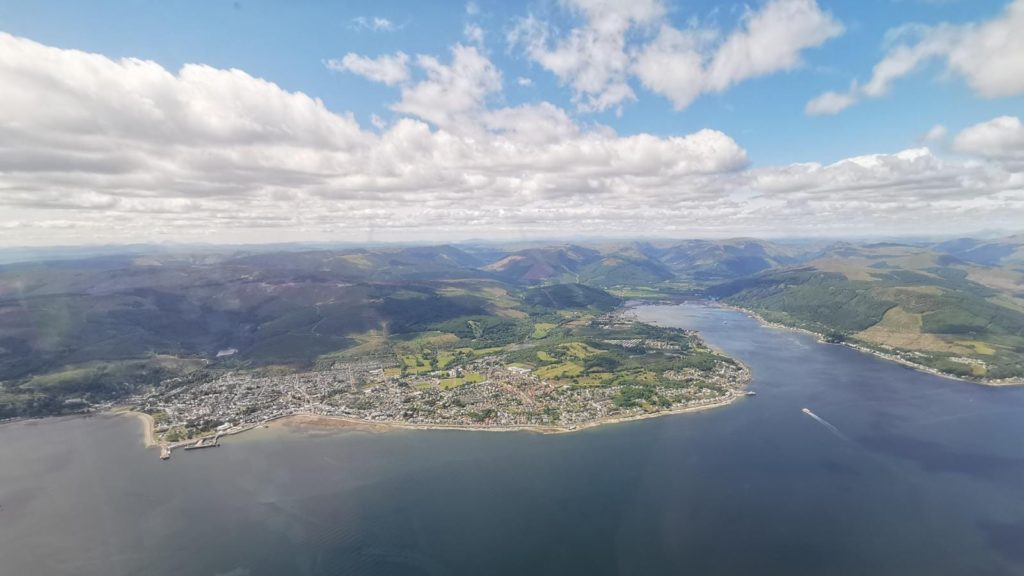
Aerial sightseeing is awesome, no matter how many hours you have.
